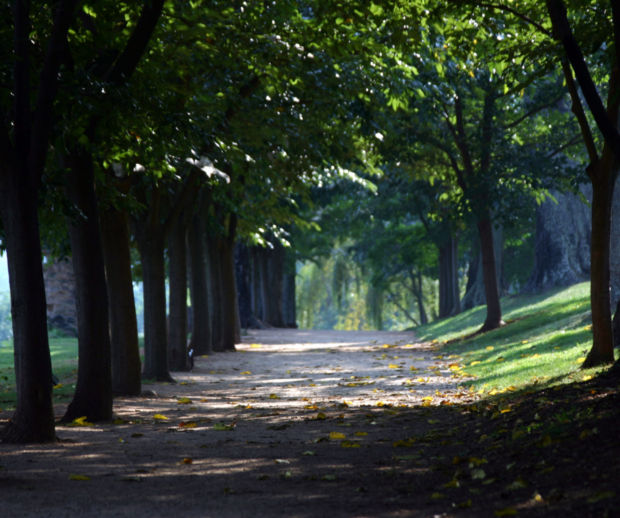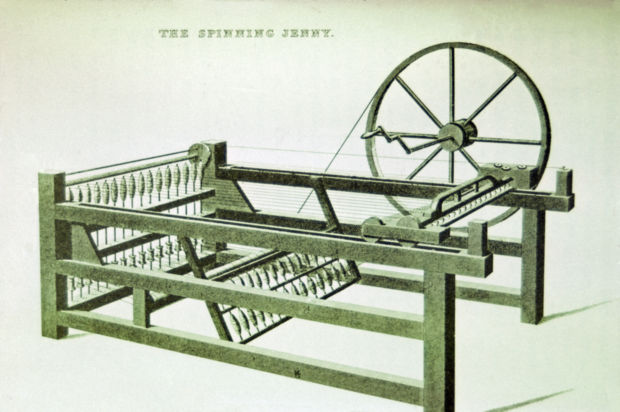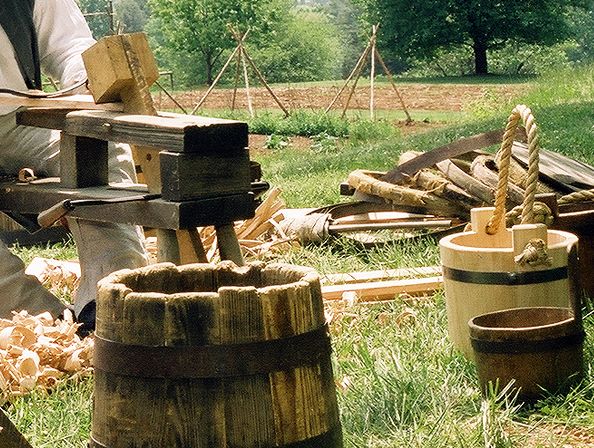Enslaved Craftsmen
Reading Level: Middle School

Slave dwellings and worksites once stood along tree-lined avenue close to the main Monticello house.
Mulberry Row, named for its mulberry trees, was a 1,000 foot ‘street’ at Monticello. It was the center of life for Monticello’s many skilled workers. In 1796, seventeen buildings stretched the length of Mulberry Row. There were log and stone homes, a wash house, smokehouse, dairy, blacksmith shop/nailery, joinery, carpenter’s shop, dairy, and storage sheds for wood, charcoal and iron. Many enslaved craftsmen worked on Mulberry Row as well as on the other plantation farms.
Blacksmiths
In the blacksmith shop, enslaved workers made shoes for horses, repaired tools, and made parts for guns and carriages. They crafted axes, bridle bits and spoons. Joe Fossett, a slave, was in charge of the blacksmith shop for twenty years. He shod horses and sharpened tools for Monticello as well as for local farmers. He made garden forks, carriage parts and plow chain traces.
Nailers
Nail making was added to the blacksmith shop in 1794. Young boys, ten to sixteen years old, made the nails, which were sold to local shops and farms. The boys could make about 10,000 nails in one day. In summer the boys worked a fourteen-hour day, swinging their hammers more than 20,000 times as they cut and headed one thousand nails.
Nailrod, the metal used to make nails, was made of long thin lengths of iron. Jefferson bought a ton (2,000 pounds) of nailrod at a time and had it shipped from Philadelphia and brought up the James and Rivanna rivers in batteaux. It was stored in a shed along Mulberry Row. The nailers heated and hammered the iron over hot coals. They shaped the points and shafts and formed the heads. When the nails were finished, they dropped them on the dirt floor to cool.
Joiners
A joiner makes doors, windows and decorative woodwork. Jefferson hired white joiners to build Monticello. They taught joinery skills to slaves who helped craft Monticello’s moldings, doors and floors. Many became skilled cabinetmakers.
In 1809, John Hemmings, an enslaved carpenter, took over the running of the joinery. He was a “first-rate” worker, recalled Edmund Bacon. He made furniture, including a dressing table and chairs, and a writing desk for Jefferson and his family. David Hern, another skilled woodworker, made gates and wheelbarrows, and built cabins and farm buildings.
Weavers and Spinners
Enslaved women and girls, from 10 to 16 years old, worked as weavers and spinners. Jefferson noted in his records that his slaves were able to make “2000. yds. of cloth a year, which I formerly bought from England.” The cloth was used to make clothes for the slaves. (Jefferson usually bought finer European cloth and clothing for himself and his family.
During the War of 1812 the weavers and spinners worked in the ‘factory,’ built near Jefferson’s Lego farm. Later, they moved to Monticello mountain. Young slaves used a carding machine to prepare the raw fiber. The older girls used spinning jennies to spin the yarn. They used looms to weave the cotton, hemp and wool into coarse cloth.
In 1815, thirteen women and children worked in the shop. Jefferson wrote that he had “three spinning jennies agoing.” The slaves worked from sunup to sundown, nine hour-days in January to fourteen-hour days in June.
Coopers
Coopers made and repaired barrels, about four a day “from the rough” and six barrels a day “when the staves are drawn.” The Monticello coopers and their helpers were slaves.
Two cooper shops were built near the mill at Shadwell. At the mill, wheat was ground into flour and then shipped in the barrels to Richmond. Slaves trained as coopers were often trained in other trades. Thrimston Hern was a carpenter, cooper, and stone cutter. Barnaby Gillette was a nailer, shoemaker, and cooper.





